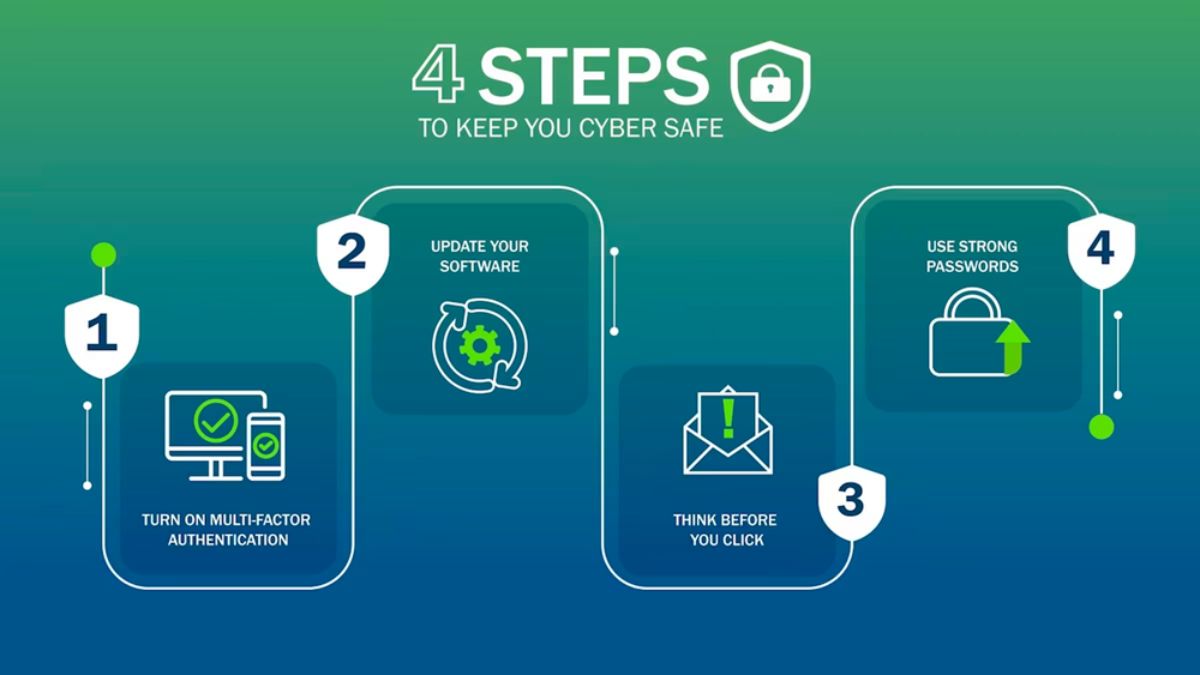In 2025, cyber threats are more advanced, frequent, and damaging than ever before. Phishing scams, ransomware attacks, and data breaches target individuals, small businesses, and large corporations alike. Protecting your data now requires a layered, proactive cyber security strategy. This guide shares practical and effective cybersecurity tips for 2025 to help you stay ahead of evolving risks.
Understand the Cyber Threat Landscape
Cybercriminals are increasingly using sophisticated methods such as phishing, business email compromise (BEC), and exploiting unpatched systems. Reports from late 2024 and early 2025 show a sharp rise in targeted attacks, making user training and strong technical safeguards essential for every organization.
1. Use Strong, Unique Passwords with a Password Manager
Weak or reused passwords remain a leading cause of account compromises.
Best practices:
- Create long, unique passphrases for each account.
- Store credentials in a reputable password manager.
- Avoid frequent password changes unless a breach is suspected.
2. Enable Phishing-Resistant Multi-Factor Authentication (MFA)
MFA adds an essential extra layer of defense.
Best practices:
- Use hardware security keys or FIDO2/WebAuthn for better phishing resistance.
- Enable MFA on all critical accounts — email, banking, cloud storage, and admin logins.
3. Keep All Systems Updated
Software vulnerabilities are prime hacker targets.
Best practices:
- Enable automatic updates for operating systems and applications.
- Regularly update router firmware and IoT devices.
- For businesses, keep a prioritized patch schedule for critical systems.
READ MORE: Infinix GT 30 Officially Unveiled with Cyber Mecha Design and Gaming Upgrades
4. Back Up Data and Test Restores
Reliable backups are your safety net against ransomware.
Best practices:
- Follow the 3-2-1 backup rule: three copies, two media types, one offsite.
- Use immutable cloud backups where possible.
- Test restores quarterly to ensure backup integrity.
5. Strengthen Email and Web Security
Email remains the most exploited attack vector.
Best practices:
- Implement DMARC, SPF, and DKIM to protect against email spoofing.
- Use a secure email gateway to scan links and attachments.
- Follow OWASP Top Ten security guidelines for web applications.
6. Secure Remote Access and Networks
With remote work more common, secure connections are critical.
Best practices:
- Use a VPN or Zero Trust Network Access (ZTNA) solution.
- Change default router credentials and enable WPA3 encryption.
- Segment networks to limit damage in case of a breach.
7. Protect Mobile Devices and IoT Gadgets
Phones, tablets, and IoT devices can create security gaps.
Best practices:
- Enable device encryption and use strong screen locks.
- Keep all apps and OS updates current.
- Place IoT devices on a separate network.
8. Train Users Against Phishing
Human error still causes most breaches.
Best practices:
- Run regular phishing simulations.
- Provide clear training on identifying suspicious emails and links.
- Encourage a security-first mindset across your team.
9. Prepare an Incident Response Plan
Quick response minimizes damage.
Best practices:
- Document roles, communication steps, and containment actions.
- Keep emergency contacts updated (IT, legal, cybersecurity experts).
- Test your plan annually with tabletop exercises.
10. Manage Privacy and Vendor Security Risks
Third-party weaknesses can expose your data.
Best practices:
- Collect and store only necessary data.
- Assess vendor security compliance before granting access.
- Follow frameworks like the NIST Privacy Framework for alignment.
Cybersecurity Checklist 2025
- Unique passwords + password manager
- MFA with hardware keys
- Automatic OS/app updates
- Backups (3-2-1 rule) + restore tests
- Email authentication (DMARC/SPF/DKIM)
- VPN or ZTNA for remote access
- Device encryption & IoT network separation
- Phishing simulations & awareness training
- Incident response plan ready
- Vendor security reviews
Conclusion
In 2025, cybersecurity is not optional — it’s essential. By adopting strong passwords, MFA, updates, backups, phishing awareness, and an incident response plan, you can dramatically reduce your chances of becoming a cyberattack victim. Start implementing these cybersecurity tips 2025 today to protect your personal and business data.









